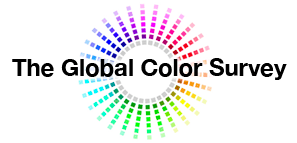color
diy tip: color /
diy tip: color
Josef Albers, an artist and teacher who came out of the Bauhaus, published a book in 1963 "Interaction of Color", in which he showed how perception is shaped by both object and context. Color, for example is perceived differently, depending on the background.
Homage to the Square, 1965
What does it mean to us in branding and graphic design? We suggest you never pick a color in isolation: always pick them in pairs (foreground/background for example), or pick them conscious of the context in which they will be seen...even if that context is a white page. Color changes depending on the context.
fun facts: color, and why it matters /
fun facts: color, and why it matters
The good people at colorcom.com offer these little tidbits:
1. Color alone increases brand recognition by up to 80%.
(Pick good colors people)!
2. People judge people, environments and products within 90 seconds of initial viewing. Between 62% and 90% of that assessment is based on color alone?
(You have to wonder where they get these facts: turns out its surveys)
3. 84.7% of survey respondents stated color accounts for more than half among factors important to choosing products.
source:www.colorcom.com/research/why-color-matters




